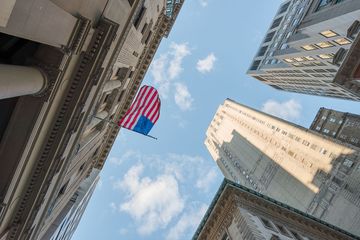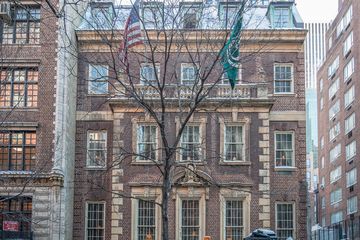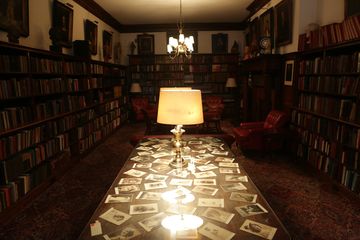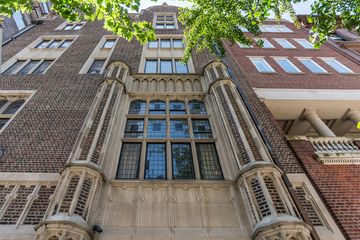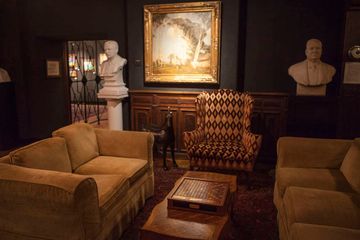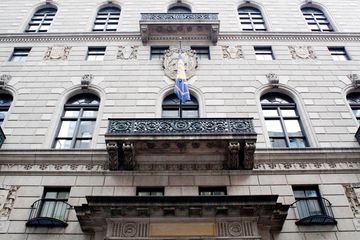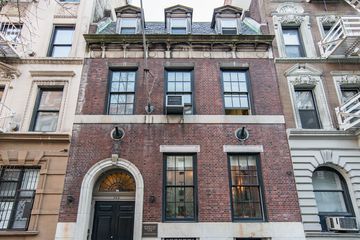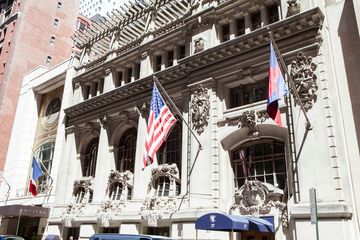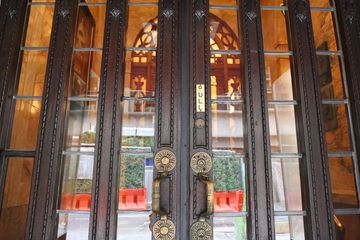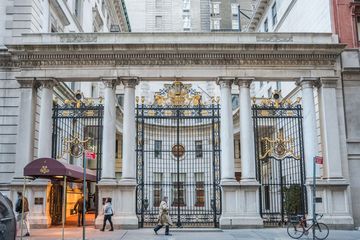The Players, an organization founded in the late Nineteenth Century to further the careers of talented actors by linking them with established patrons of the arts, is a place of considerable national historic, artistic, and dramatic importance. Though founded by, and for, a small group of primarily American Shakespearean Actors, today The Players serves over 700 active theater and film actors, television hosts, arts patrons, and businessmen and women. Although a private club, non-members are given access to this simply remarkable townhouse that serves as its home - guests are invited to the occasional theater production and lectures that are held here. Edwin Booth, the most famous American Shakespearean actor of his time, purchased the mansion at 15 Gramercy Park South and had it redesigned by famed architect Stanford White to house a monumental club and theater for actors and a residence for himself on the upper floors. The ornate chandeliers, wooden parquet floors, gilded ceiling wreaths, Tiffany Glass windows, open circular staircase, indoor stage, library, and dining room are lined with portraits of Edwin by John Singer Sargent and paintings of the faces of every distinguished member of the club throughout its history. From founding member Mark Twain, to Frank Sinatra, to Carroll Burnett, to Uma Thurman, the breadth of actors and theatrical personalities covering the old, intricately carved walls was awe inspiring. A particularly memorable painting was a full-length portrait of the late, celebrated theater patron Helen Hayes wearing a brilliant, crimson velvet gown. Hayes was the first female to be admitted in 1989. The building is still filled with many of the original decorations, objects, and pieces of furniture used by the founding members of the club: the simple wood “club tables” by the bar in the dining room; humidors and personalized drinking mugs for the famously heavy smokers and alcoholics of the old Shakespearean crew; and mosaic tiles carved with words of wisdom for the actors themselves. “Dear actors, ” reads one – “eat not onions, nor garlic, for we are to utter sweet breath. ” And another, a particularly revealing line from Shakespeare, “you shall not budge, you go not till I set you up a glass. ”And for the real history buffs – Edwin Booth had an older brother, John, another famous Shakespearean actor. The brothers disagreed and competed over everything, from their individual claim to particular theater venues to politics (Edwin was a Unionist, John a Confederate). They settled on a compromise to divide the country into two theatrical spheres for each to work in – Edwin in the North, John in the South. And as for their political disagreements, John Wilkes Booth assassinated President Abraham Lincoln in the Ford Theater on April 14, 1865. When we visited in late 2012, The Players was about to celebrate its 125th anniversary. After asking our tour guide, the knowledgeable assistant executive director of the Club, John McCormick, how he felt about his job, he responded “I get goose bumps every time I think about this site that I work in. ”
